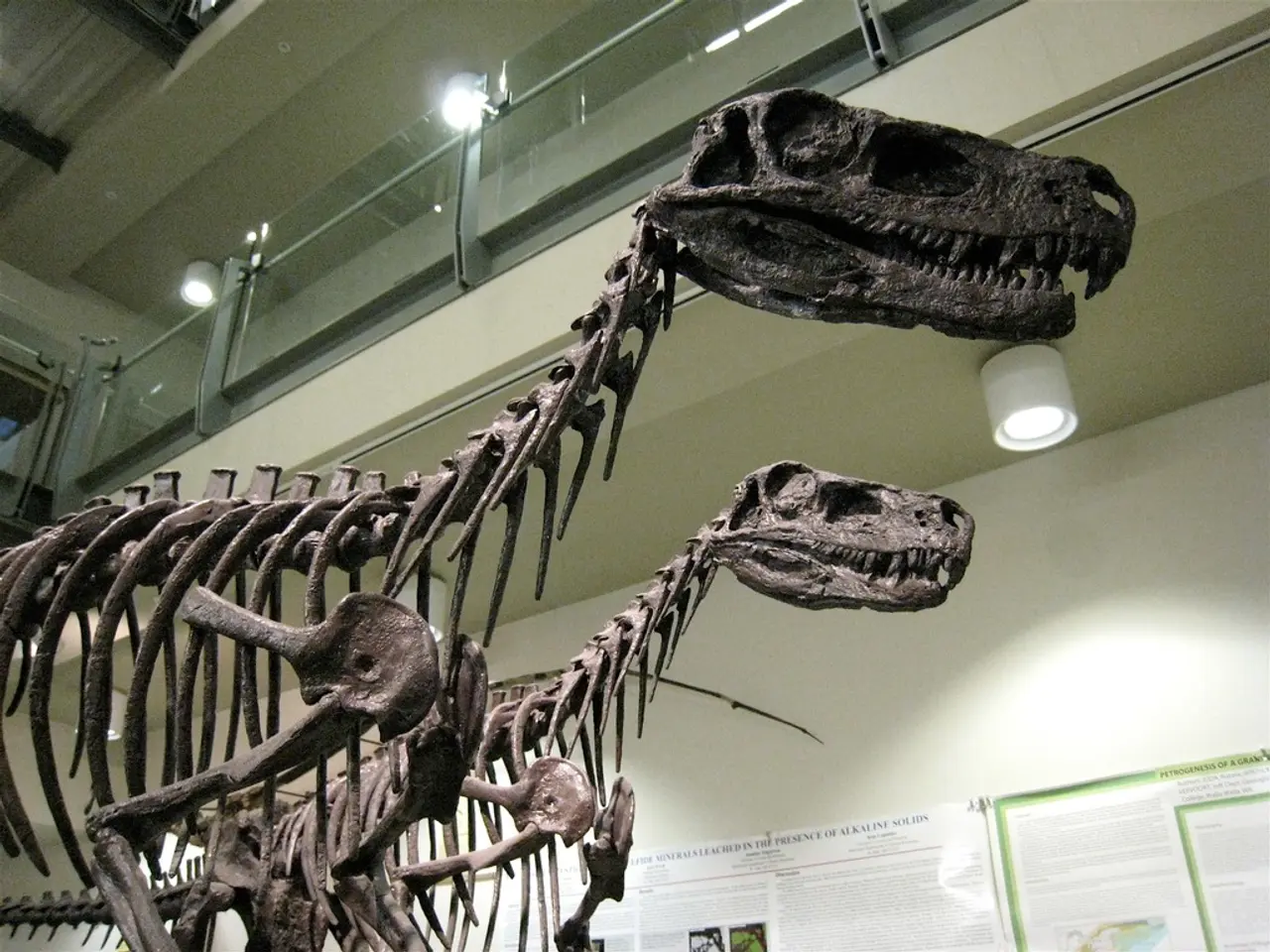Ancient Fossil Unearthed Accidentally in Scotland - Age Estimated at 168 Million Years Old
In a significant find for paleontology, a new species of flying dinosaur, Ceoptera evansae, has been discovered on the Isle of Skye in Scotland. This discovery, made by a team of researchers, offers valuable insights into prehistoric diversity and expands our knowledge of pterosaurs.
The Isle of Skye, a Site of Special Scientific Interest, has long been a significant site for paleontologists. With numerous fossils uncovered, it reveals insights into ancient ecosystems. The latest addition to this rich fossil record is a pterosaur, a flying reptile, found embedded within rock.
Since 2006, the fossil has been carefully chipped away at to free it. Dr. Lis Martin-Silversone, a paleontologist from the University of Bristol, led the excavation and is the lead author on the findings. The species has been named Ceoptera evansae, a nod to the Gaelic word for mist and the Latin word for wing, as well as Professor Susan E. Evans, a British paleontologist who has worked mainly on the Isle of Skye.
The discovery of Ceoptera evansae is particularly significant because it is the first of its kind in Scotland. Most pterosaurs in this group have been found in China up till now. This finding reveals that these prehistoric flying reptiles had a much wider geographic range than previously known, indicating that their diversity was "hidden" and more extensive across what is now Europe, not just Asia.
This new species contributes to evidence that there was a rich and varied ecosystem of flying reptiles in Europe during the Middle Jurassic. It suggests that the diversity of pterosaurs was under-sampled or overlooked until now. The discovery may cause scientists to reassess assumptions about pterosaur evolution, including how and when different lineages spread geographically.
The discovery of Ceoptera evansae far from its relatives' usual range helps paleontologists understand how these animals might have migrated, adapted, and evolved in different environments. It offers new evidence of pterosaurs living further north during the Jurassic period, suggesting that these animals were more widespread and hardier than previously thought.
As research continues on the Isle of Skye, more exciting discoveries are expected from this fossil-rich island. Scientists plan to continue exploring the Isle of Skye, focusing particularly on boulders, in the hope of uncovering more secrets of prehistoric life.
[1] References: - Martin-Silverson, L., et al. (2022). A new pterosaur from the Middle Jurassic of the Isle of Skye, Scotland, and the diversity of pterosaurs in the Early-Middle Jurassic of Europe. PeerJ. doi: 10.7717/peerj.11426v2. - BBC News (2022). New flying reptile species found in Scotland. [online] Available at: https://www.bbc.co.uk/news/science-environment-62052121 [Accessed 15 Mar. 2023].
- The discovery of Ceoptera evansae on the Isle of Skye provides valuable insights into environmental-science and expansion of knowledge in paleontology.
- The Isle of Skye, a hub for researchers in the field of science, boasts a diverse fossil record, revealing information about ancient ecosystems.
- This new find challenges existing assumptions about space-and-astronomy and technology in regard to pterosaur evolution, suggesting that these creatures may have adapted more than previously believed.
- As a result, the study of Ceoptera evansae offers potential for self-development and education-and-self-development within the realm of general-news and lifestyle.
- With the discovery of Ceoptera evansae in Scotland, researchers are now exploring possibilities of how medical-conditions in prehistoric times may have influenced the migration and adaptation of these flying reptiles.
- Advancements in research, uncovered on the Isle of Skye and studied within the field of science, may prompt changes in the way we perceive and understand the interconnectedness of ecosystems across the globe.




